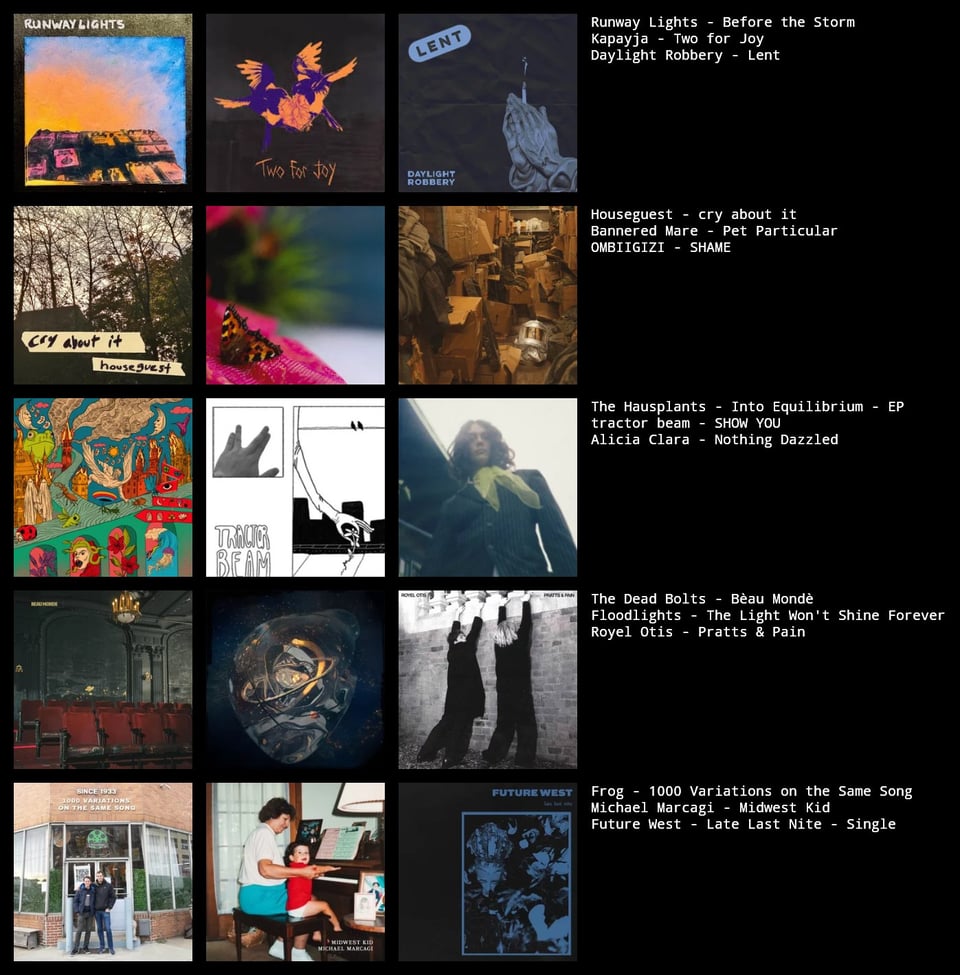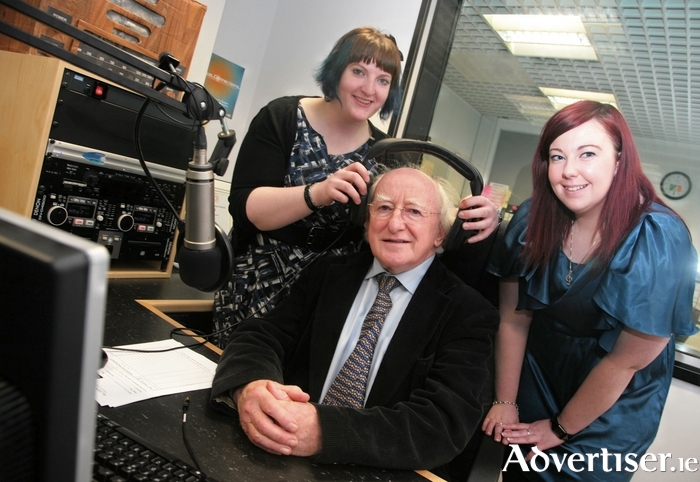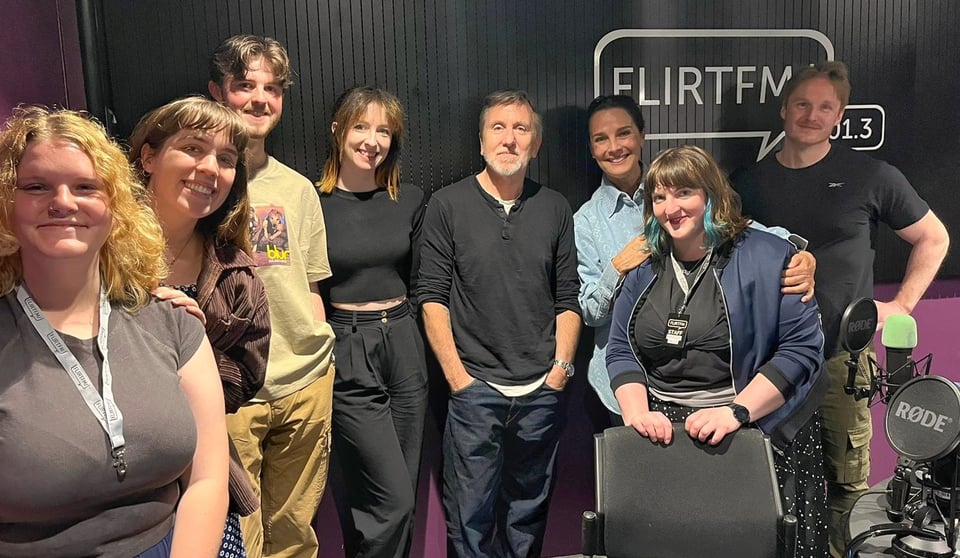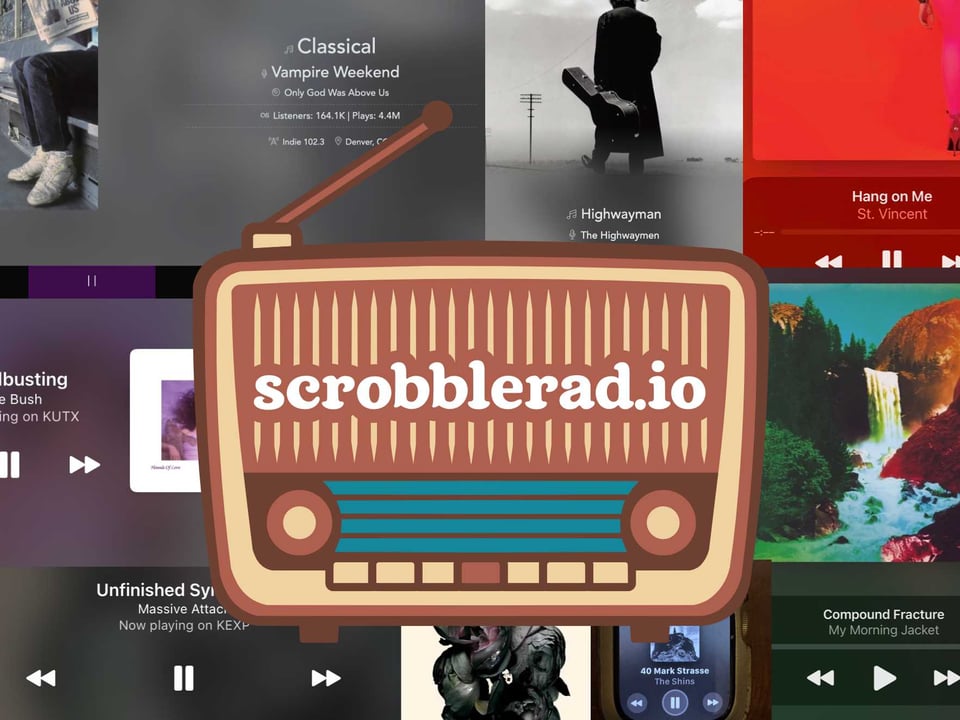It sounds like a real radio show!
One of the great things from community radio is when you get feedback from people who have listened and enjoyed The Human Recommendation radio show on FLIRT FM. A few people have commented to me that they enjoyed the show on their commute to work, college, in their car, on the train and walking home with headphones on. A note of encouragement can make such a difference. But one piece of feedback that made me smile, is when they said “It sounds like a real radio show!” and I think that could be my new promotional tag line for the show. My most recent show aired on Monday last and you can listen back to it on Mixcloud

There is so much great indie music out there from Ireland and around the globe that deserves more attention, try have a listen and support independent music!
The community radio I volunteer at is FLIRT FM in Galway city, Ireland and the broadcast range is roughly 15 miles in every direction attracting listeners from the University campus and from the city’s suburbs. Radio shows including The Human Recommendation also stream on the web at broadcast time.
History of FLIRT FM
The station was licensed back in 1995, as part of a pilot scheme in community radio by the independent Radio and Television commission. It originally began broadcasting on 105.6 FM on the 28th of September of that year. The station "started as a student effort", according to founding station manager Andrew Ó Baoill who was also founder and former auditor of the University Radio Society in 1993.
FLIRT FM is one of only three full time student radio stations in Ireland, along with Limerick’s Wired FM and UCC98.3 in Cork City. The station will celebrate their 30th anniversary this year and I only recently discovered that FLIRT FM was not the original naming choice for the station. One of the first proposed station names was “Vox” based on the Latin for a voice for students. But this name was rejected as there was already a UK based magazine in existence called Vox.
In a naming contest “FLIRT FM” was put forward, and the winning suggestion was duly accepted by the radio commission. FLIRT FM stands for “Fully Licensed Independent Radio Transmission”.

In 2006, the station applied for a new 10-year licence and received a new broadcasting frequency of 101.3FM. President Michael D Higgins was always a strong advocate for community radio and launched the station initially and returned in 2009, when FLIRT FM moved to the new Áras na MacLéinn premises in 2009. The station then began to foster and forge their relationship with the University of Galway and the students.Current station manager Paula Healy has been with FLIRT FM off and on since 1998. Paula believes that the station exists not only to provide a service to listeners, but also to deliver training for students.

The station hosts third-level, TY, Tús and CE placements each year and partners with Foróige, Shining Light, Baboró International Arts Festival for Children, the University of Galway’s Office of the Vice President for Equality, Diversity and Inclusion, MAs and BA in Journalism, BA in Global Media and Acadamh na hOllscolaíochta Gaeilge amongst others to regularly create programming.
Paula explained her passion for radio and media,
“I was a media nut growing up. Obsessed with music and the only way you could listen to it pre-internet was radio. I used to scan from station to station trying to find songs I liked. When I got to NUI Galway and found out there was an actual radio station you could volunteer for; life made!”
There are also Community Radio Social Benefits; “Benefits to individuals or collective actors in the community that enhance their lives socially, culturally or economically, or in terms of development, empowerment and/or well-being, that otherwise would not have come about”- Community Radio Delivering Social Benefit, Seán O Siochrú, Nexus Research Cooperative, June 19th 2020.
Similar to the U.S college radio station model, the station leans on enthusiastic volunteers, and it’s currently home to up to 150 folks. (Incidentally, if you want to learn more about college radio in the U.S. you should follow Jennifer Waits )

With two full-time, one part-time paid staff and interns looking after operations and compliance, the station has overcome many challenges including floods, power cuts, equipment failures, vital cables being chopped, transmitters dying and overheating, restricted access to the building, cyber-attacks. When I asked Paula how the station navigated those challenges such as Covid-19 and the global pandemic, she replied;
“Covid-19 required everyone to adapt and be creative - the same went for the station staff. It was never lonely or boring as there was so much work and everyone was in touch all the time. In fact, the cyberattack and loss of internet on campus was actually more disruptive to running the station than lock-down!”
I asked her about the changes in radio to which she commented
“The biggest changes in radio; digital editing, internet access for research (good and bad information), endless choices of online music services and podcasts.”
But she also mentioned to counter that, “the biggest "non-changes"; the sense of community, the skills and communication development and the personal touch with music choices and hyper-local talk content.”
Tune into FLIRT FM 11:00-04:00 Monday-Friday, 13:00-22:00 Saturdays, and the web stream is available 24/7.
ScrobbleRadio
Speaking of a passion for radio, I recently had the pleasure of making the acquaintance over on Bluesky of front end developer James Harris, who is responsible for creating Scrobbleradio.

James mentioned to me,
“There are so many great radio stations out there in the world. Most people’s eyes glaze over as soon as you mention radio, as they immediately correlate it with the wasteland that is their programmed FM channels in their car that have playlists about as deep as a cereal bowl. But radio is so much more than being in the broadcast reception area these days. With the advent of the internet, it transcends geography and international borders.”
D.I.Y
James went on to explain that “ScrobbleRadio” started out more as a long term personal problem than anything. "Scrobble" is what Last.fm uses to describe how it automatically tracks what music you listen to, and when. James was frustrated with the disconnect between radio and the ability to log what he was actually listening to at the time. He thought the whole concept worked well with iTunes and other music library apps, but felt it started to fall apart pretty quickly if he wanted to log what he was listening to from traditional sources like radio.
This was bugging James for almost 2 decades, where he was hoping for some app developer on the internet would get around to working on a radio app that actually took personal logging seriously. And so, then he started learning by doing, reference his GitHub repo and he explained
“I’m a front-end web developer, but I’d never really gotten into actually building the nuts and bolts of an app before. So with the goal of improving my JavaScript skills along the way, I sought to build the app I always wanted to exist. At its core, that’s why I built ScrobbleRadio. I wanted an easy way to tap into all these amazing radio stations that simply weren’t available on my FM dial”
The Human Recommendation
There are radio stations with worldwide audiences that are thriving by being independent, listener supported entities. U.S stations such as KEXP, NPR, WFMU come to mind.
“While a streaming service can feed you quality music recommendation, it rarely offers context. Sometimes you need to be told implicitly why you should care about a given song. Just hearing it isn’t good enough, because there’s millions of songs out there.” James commented and he’s not kidding, in a recent interview with the Sunday Observer, streaming service Deezer CEO Alexis Lanternier explained the challenge facing young bands and listeners.
“We now have almost a million songs a week coming, it used to be 150,000 three years ago … It’s harder given the higher competition there is, inherently, in the market,” - Alexis Lanternier, CEO Deezer
#TeamHuman
James also mentioned,
“An algorithm isn’t pumped for you to hear a song. You’re not going to blow up an algorithm’s email box to tell it how much you loved that song, like you can a radio DJ.”
It certainly is not, and it is radio listeners like James that help inspire me to endeavor to create the best hour of indie and alternative music from Ireland and around the globe. Hopefully the listener can discover a song that resonates with them and get some context on the band, while hearing the full track. One last point from James:
“While listening to Apple Music playlists can scratch the musical itch, it doesn’t connect with the human experience. A set of 3 songs tangentially connected in a weird, and totally human way can make your day. Hearing something mind-blowing for the first time then someone giving you some background about the song and artist helps the whole experience stick in your brain.”
This was a similar sentiment to why I originally volunteered at FLIRT FM and decided in my own way to push back against lazy A.I generated play-listing and some awful recommendations. I have been blogging about various music themes on Medium.Com, especially around music discovery and my preferred “Human Recommendation” for the last ten years as “I still prefer self-directed or human curated music discovery”
Despite the over saturation of music out there, it’s still very enjoyable discovering music that was waiting to be surfaced and sometimes it is from somewhere that sounds like a real radio show!